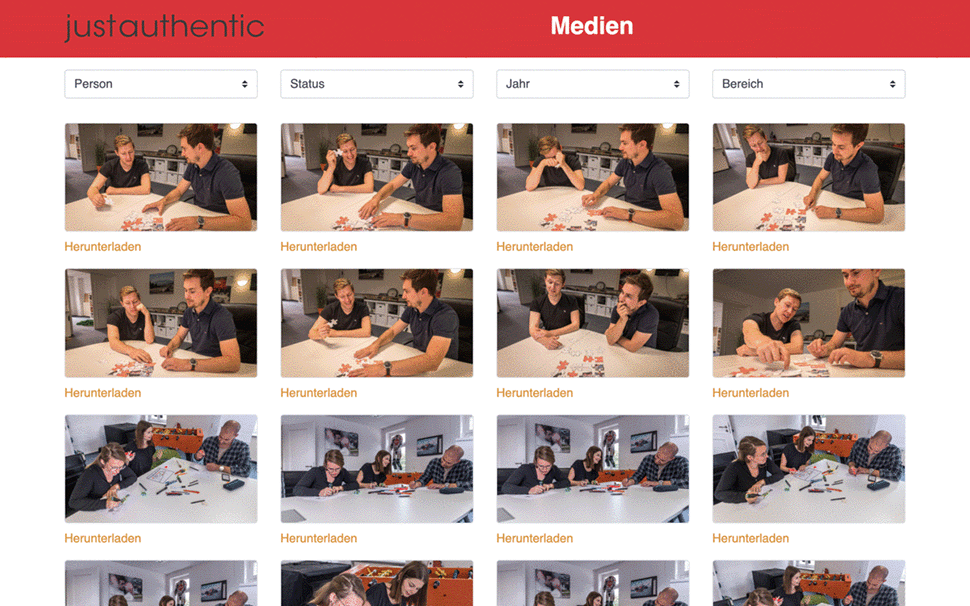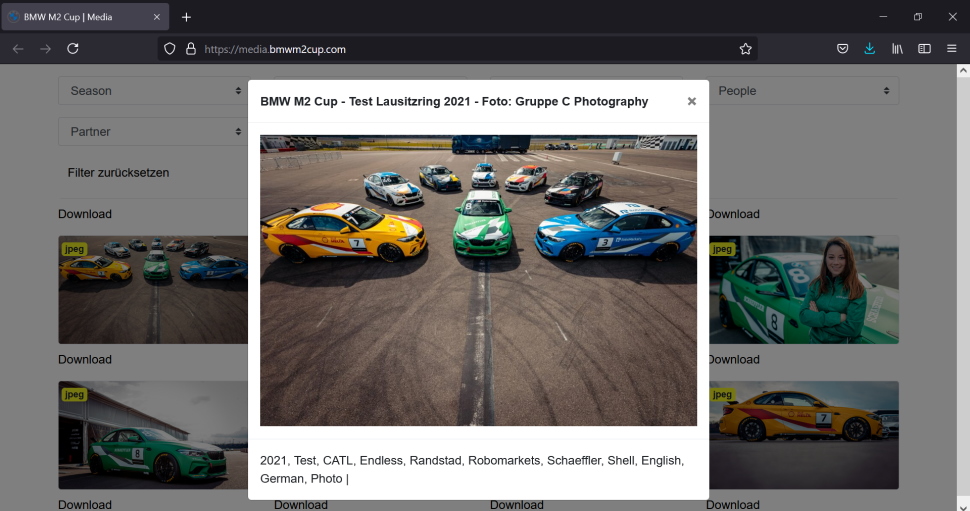Your content pool is the repository for all your content. Whether documents, photos, audio files or videos – everything has its place. Of course, you also need individual storage space for it. Depending on the package, a certain number of gigabytes is already included. We’ll explain exactly what that means in more detail:
All our three packages offer different storage. Our “basic package” is the smallest, providing you with 5 GB. That doesn’t sound like much at first, but it is quite a lot. As a reference, you can store around 2,500 photos (at 2 MB per image) or more than 160,000 PDF documents (at 30 KB per file). This allows you to organise your internal communication within the company, for example, exchanging necessary texts or images swiftly and with ease.
You need more storage space? No problem! Our second package offers a full 25 GB. That way, you’re well prepared if you want to store many videos in addition to all kinds of pictures and documents. Or you simply have a lot of content that you want to share with others – for example, in your media database.
And if that still isn’t enough, we’ll gladly double it. Package three offers 50 GB of storage. With this, you can combine your entire corporate group into one content pool or simply store all kinds of archive material together with your current content.
Our service principle also applies here: If you can’t find what you’re looking for, feel free to contact us. Together we will find an individual solution for you and your content pool.
We’ve already talked a lot about how versatile our content pools are. And this not only applies to their areas of application. They’re visually very versatile too and can be easily adapted to fit your CI. Here, we’ll explain exactly what you can change:
Colour. Make your content pool shine in your corporate colours. You can select background, menu and font colours accordingly, enabling users to see immediately that it’s your pool!

Header. You can prominently feature a title photo of your choice or your logo at the top of your page. And you can also individually determine the title’s font, colour, position and text.
Favicon. This refers to the little image in the tab next to your page title. Here you can place your logo or an icon matching your CI.
Filters. For a start, you can of course select how many and which filters you want for your content pool. In addition, you can adapt their type and sequence. This means: top, bottom, left, right – you decide on the filters’ page position. Which also applies to their form of presentation. You can choose between dropdown menu and free text search. Obviously, combinations are also possible.

Your media presentation. Square or rectangle, with or without frame – the sequence and output of your preview images depend on your taste. You can also choose how many images are produced in a row. But that’s not all: You can also add a small pointer, providing information about the type of media – e.g., video or document – used.
Lightbox. Start with the decision whether you wish to use a lightbox. It enables users to preview the file on a larger scale. In addition, you can issue information such as place or persons depicted, add a copyright or adjust a download button – depending on your specific requirements!

Most important of all: you can design your content pool according to your wishes and needs – on your own or with our assistance. We’re always here to help you and answer your questions. Of course, we can also carry out the complete adaptation, if you like. Just let us know, which option you prefer. You can get in touch too, if you need other changes. We’ll find a solution together.
Need some inspiration? Here you will find a selection of pool parties that we have already organised.
Images, videos, texts – our content pools support a large number of different media types. But which ones exactly? After all, there are countless file formats, far more than the familiar .jpg, .pdf or .mp4.
So which ones are we talking about? The list is long (which is why we’ve placed it at the end of this post). What’s important for you to know is that they all fit into the content pool and can therefore be made accessible to third parties. It makes no difference which standard browser you use or whether you access the desktop or mobile version.
Depending on your personal taste, you can also use the data types as a filter. So everyone can quickly find what they need. Perhaps it’s a vital press release or the new image video? Alternatively, you can also add an optical symbol to your content pool, showing yourself and your users what kind of file is being used. It could be a loudspeaker for audio files or a camera for videos – the possibilities are endless.
By the way, the content pool doesn’t have a problem with ZIP files They enable the combination of multiple file format types. For example, you can allow your content pool users access to multiple images, videos and documents with just one download.
Got any more questions or is there an important file format that you think is missing in the following list? Get in touch with us and we’ll find a solution together!
List of the supported file formats:
images
.jpg
.jpeg
.png
.gif
.ico
documents
.pdf (Portable Document Format; Adobe Acrobat)
.doc, .docx (Microsoft Word Document)
.ppt, .pptx, .pps, .ppsx (Microsoft PowerPoint Presentation)
.odt (OpenDocument Text Document)
.xls, .xlsx (Microsoft Excel Document)
.psd (Adobe Photoshop Document)
audio
.mp3
.m4a
.ogg
.wav
videos
.mp4, .m4v (MPEG-4)
.mov (QuickTime)
.wmv (Windows Media Video)
.avi
.mpg
.ogv (Ogg)
.3gp (3GPP)
.3g2 (3GPP2)
Our content pools are there to process, structure and offer access to all kinds of media. It makes no difference whether the data are to be publicly or privately available – the password function allows both options.
Depending on the intended purpose and the media, you can choose the version that suits you best. In just one step, you can decide whether data can be solely accessed by yourself or your employees and/or the public. The advantage: not only can you use the content pool for internal work, but you can also provide partners, media or customers with content – and users can only see data they are authorized to view.
By the way, this also functions with multi-access portals. In other words, all customers receive their own access to the content pool and are quickly able to find the required structured content.
Do you need a practical example for a user-friendly password function? How about a press database for racing teams? The content pool can be used by a team to store all its content on a single platform, where team members and photographers have password-protected access to all material. You can choose which media are made available to the public and they can be easily accessed by press and media representatives. Everyone can find exactly what they need – quickly, easily and with minimum effort!



























